What makes a Greek Halva stand out from any other dessert is its strong aroma. It's a dessert that originates from Constantinople (today's Istanbul) so it's full of Eastern spices. In fact, it is said that back then, when someone cooked Halva, its strong aroma would travel throughout the whole neighborhood.
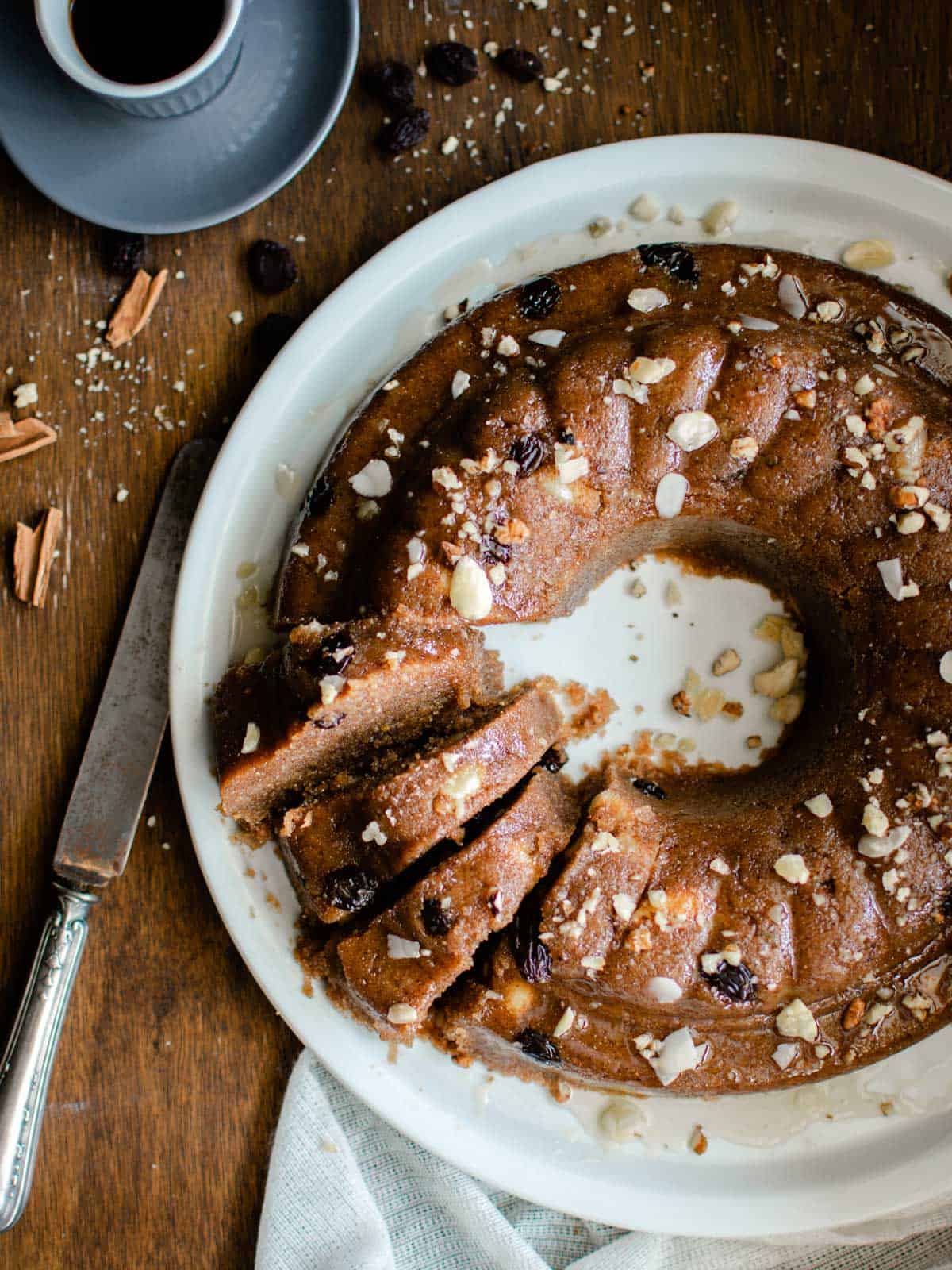
And of course, cinnamon couldn't be missing from a traditional Greek dessert. Other spices used in making a Greek Halva are ground cloves, ground nutmeg, and orange zest.
It's also flavored with raisins and almonds. But you can use other dried fruit as well, such as figs, dates, and even apricots. And also instead of almonds, pecans or walnuts.
What's Halva Like?
Think of a denser pudding, that's made of coarse semolina. With a texture that's soft and a bit crumbly. The semolina gets toasted along with olive oil (cooked on the stovetop) so it gets a really strong and nutty flavor. This also enhances all of the other earthy aromas I've mentioned above. And once the semolina is lightly browned it gets mixed with hot syrup. Which absorbs and becomes a pudding.
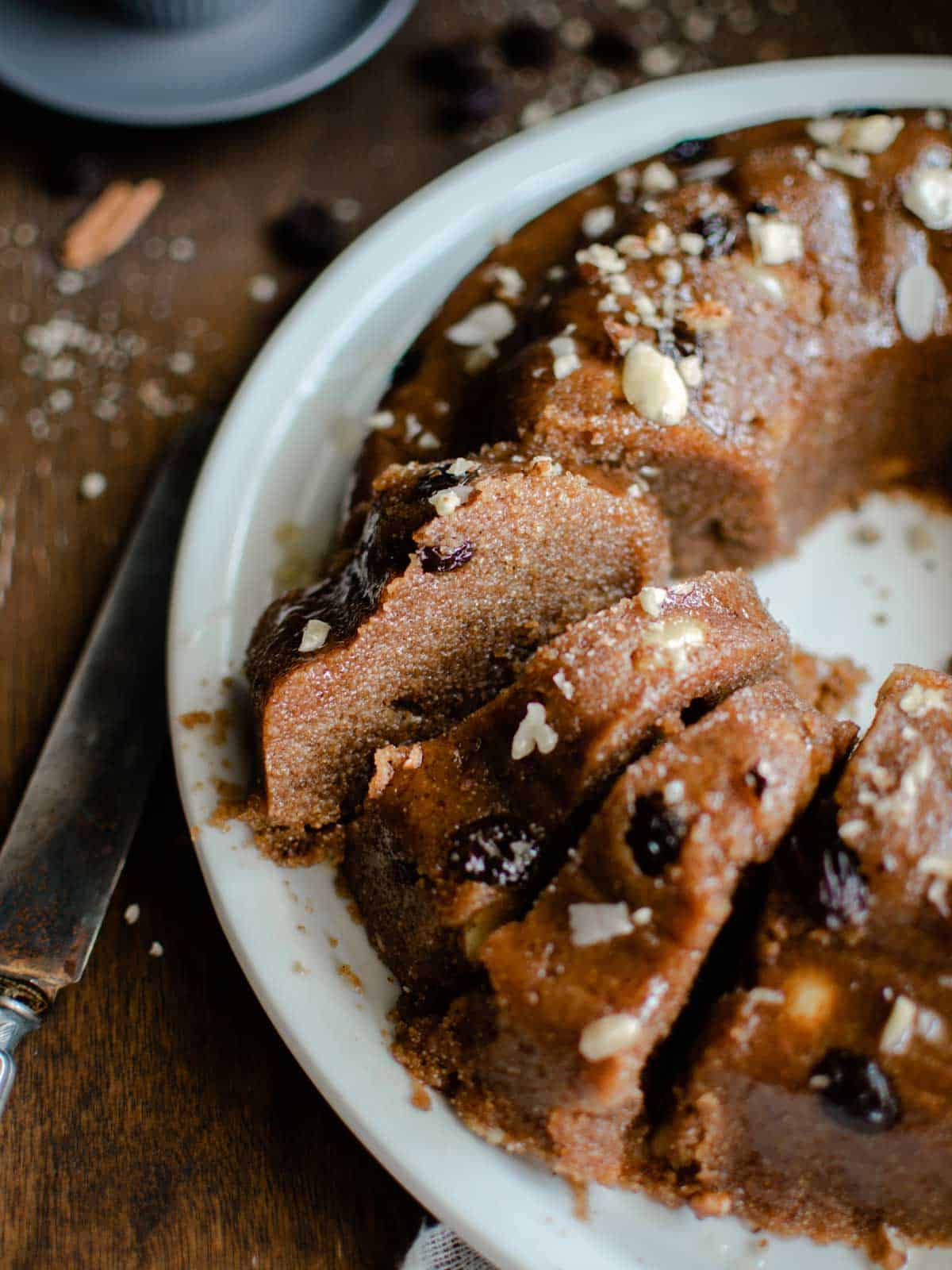
If you still can't picture Halva in your mind, and/or haven't heard of semolina before, think of a very fine cous cous that's stuck together with syrup.
Other Halva Variations
There are different versions of Greek Halva. Other than this homemade version that's served as a dessert, there is a type of Halva that we serve during Lent. Traditionally served along with salty food like olives, Tarama Dip, and Lagana Bread. That's the Macedonian Halva that's made with Tahini and often with cocoa as well.
Another version that's really famous in Greece, is Halvas Farsalon. Made with caramel syrup, toasted almonds, and cornstarch. Whereas "Farsalon" refers to the area in Greece it comes from, and that's Farsala.
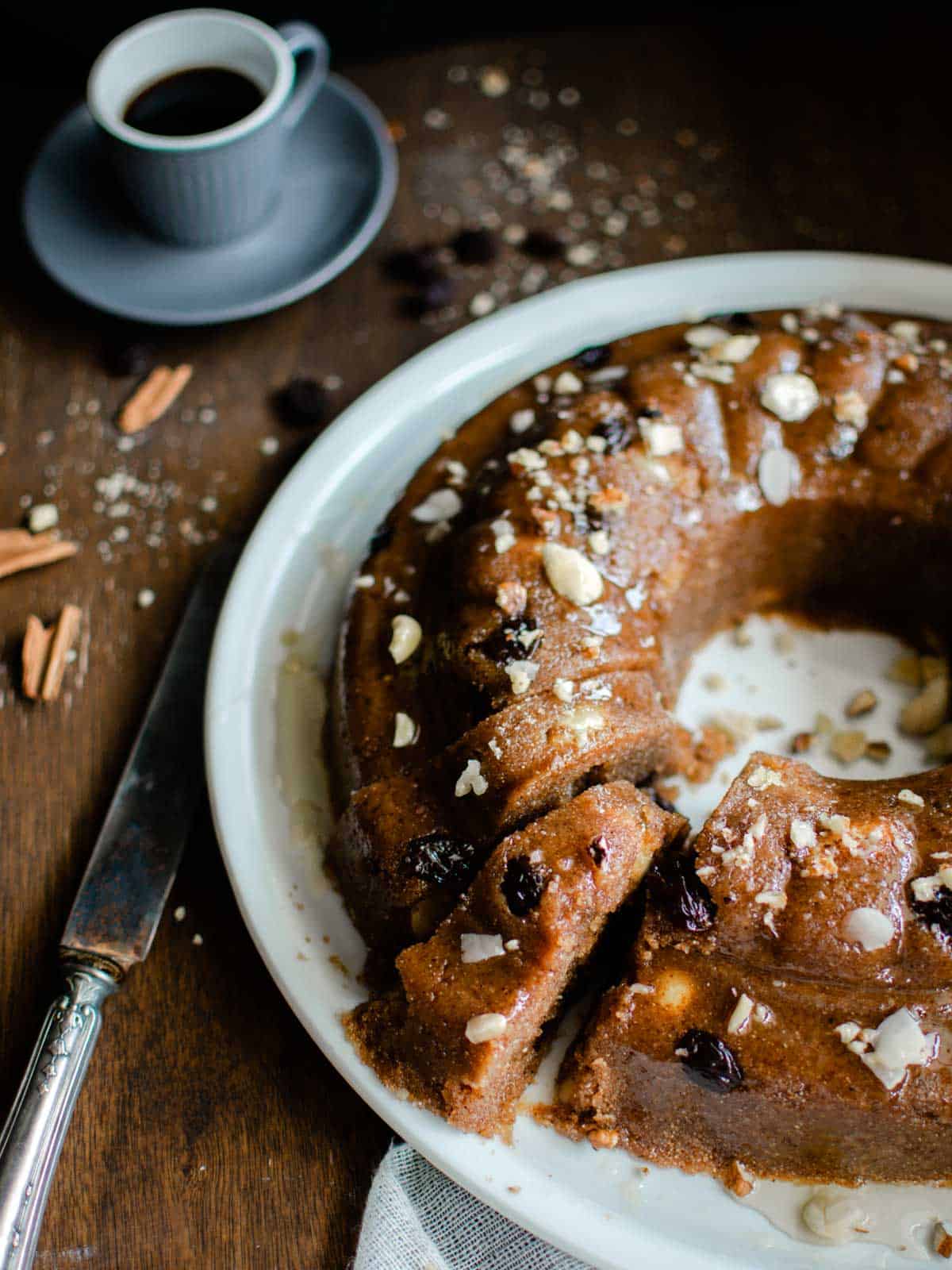
Something to keep in mind...
When you cook semolina on the stovetop whether you are making a cream, or a dessert, like Halva, you have to be really careful not to burn yourself. What happens is that once semolina gets heated along with some liquid, it makes bubbles that explode if you don't stir it constantly.
Therefore, when it's time to pour the hot syrup into the toasted semolina, do this slowly. First, take the pot off the heat, and then add the syrup in bits at a time, using a ladle. And meanwhile, stir constantly using a big wooden spoon. Also, the taller the cooking pot the better.
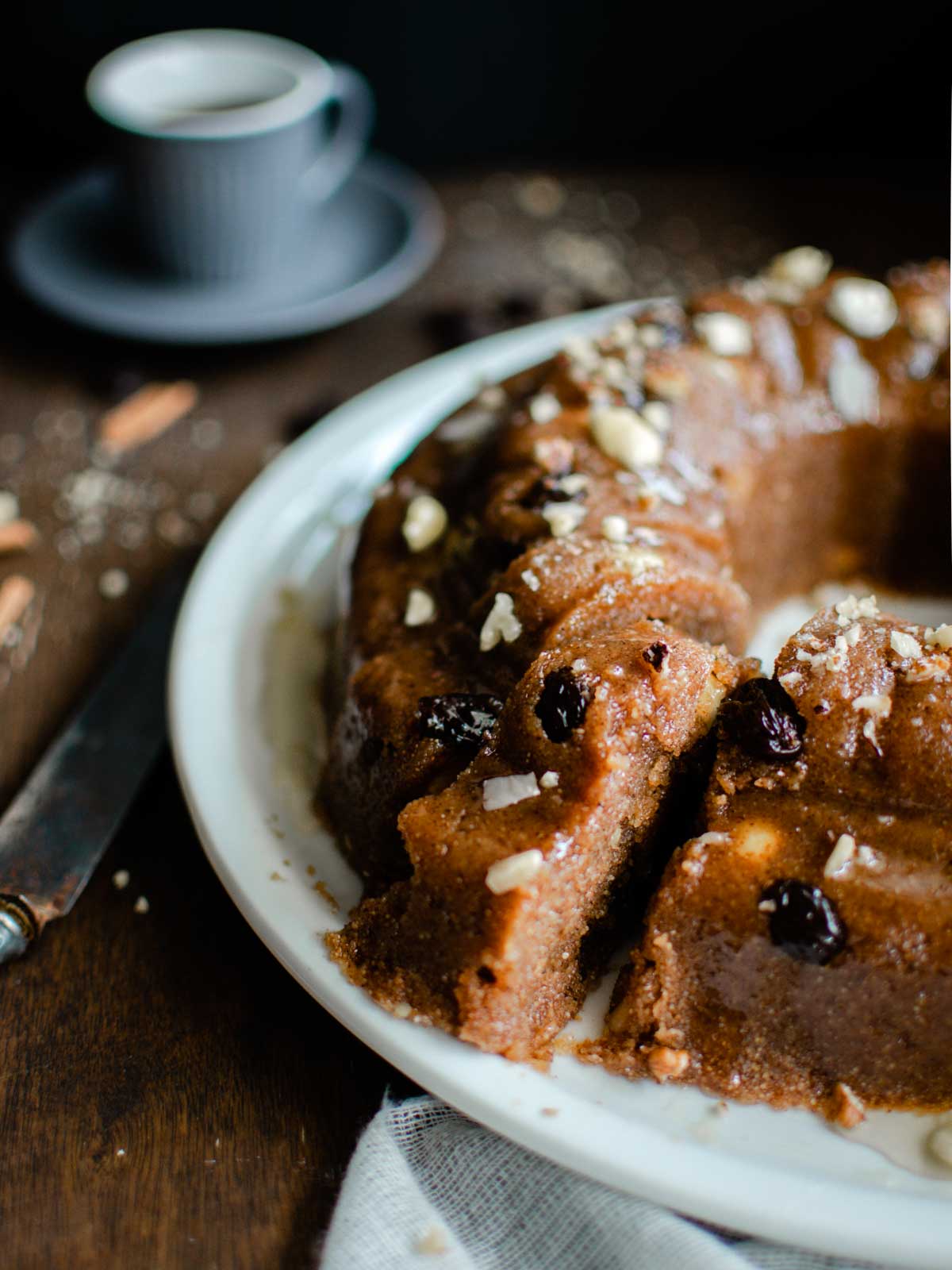
TOOLS NEEDED FOR THIS RECIPE :
Recipe
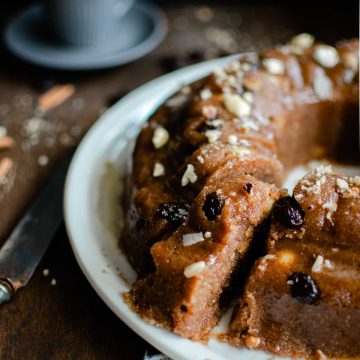
Greek Halva (Spiced Semolina Pudding)
Ingredients
For The Syrup:
- 4 + ½ cup sugar
- 6 cups water
For The Halva:
- 1 + ½ cup olive oil
- 3 cups coarse semolina (= 1 pack of semolina)
- 4-5 tablespoons raisins
- 100 grams / 3.5 oz skinned almonds coarsely chopped
- 1 orange zested
- 2 tablespoons ground cinnamon
- ½ teaspoon ground nutmeg
- ¼ teaspoon ground cloves
Instructions
For The Syrup:
- Add the water and sugar for the syrup in a cooking pot and heat over high heat.
- Once the syrup starts to boil reduce the heat to medium and simmer for 10 minutes. Meanwhile, make the Halva.
For The Halva:
- Add the olive oil to a tall cooking pot or stockpot. Note: The pot shouldn't be too shallow because when semolina gets cooked it bubbles a lot. Therefore, you have to give it some space in order to not burn yourself or anything to escape out of the pot.
- Heat the olive oil over medium-high heat until it is very hot but not smokey hot. Add the semolina and cook stirring occasionally with a wooden spoon. Once the semolina starts to get some color, stir constantly for a few minutes until it gets a light brown color all over. Take the pot off the heat and pour very carefully the syrup in the semolina. Do this by adding big spoonfuls of the syrup, using a ladle, and stirring the semolina with the wooden spoon after adding each spoonful. You have to be very careful at this point because once you start to add the syrup the semolina will bubble a lot.
- Once all the syrup is added to the pot, add the pot back on the heat. Add all of the remaining ingredients and stir constantly. After a few minutes, the semolina will absorb all of the syrup and start to become sticky. Cook until it feels like it starts to stick at the bottom of the pot.
- Remove from heat and transfer the mixture immediately to a fluted tube cake pan (no need to grease it). Press it inside the pan (to remove any air) and flatten the surface on top with a spoon. Let the Halva reach room temperature before unmolding. To unmold the halva just turn the cake pan on a serving plate and wait a few seconds. It should fall down on its own. Otherwise, pat the pan a bit.
- Serve the Halva drizzled with honey and extra almonds on top.
- You may store in a cake tin or food container at room temperature for up to a week. Since it does not contain any dairy it won't spoil. Plus syrup helps to preserve it nicely!
Nutrition
YOU MAY ALSO LIKE...




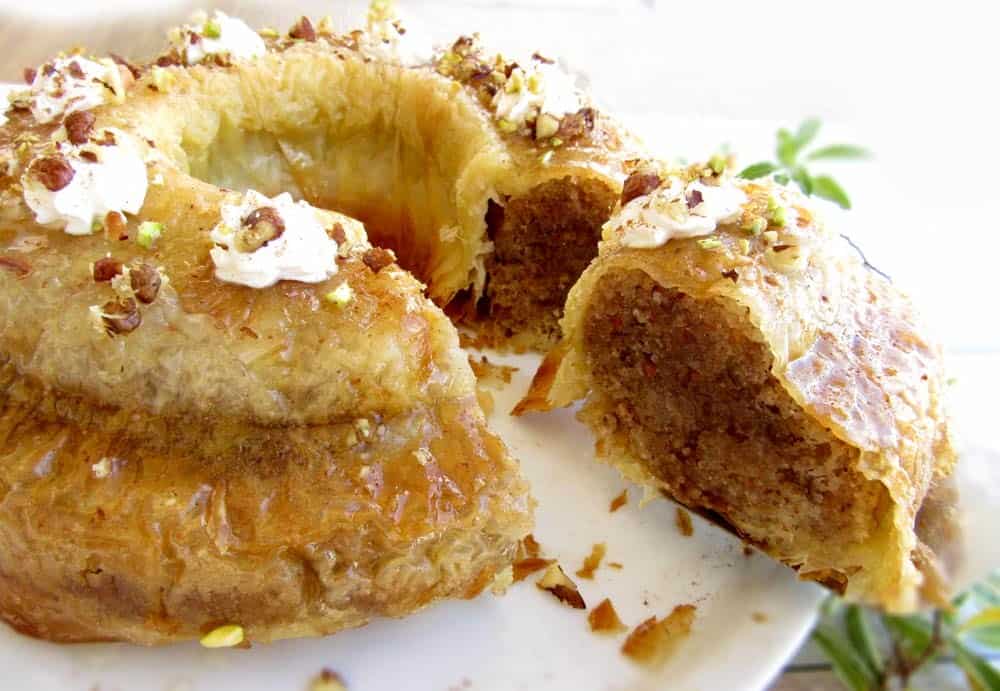

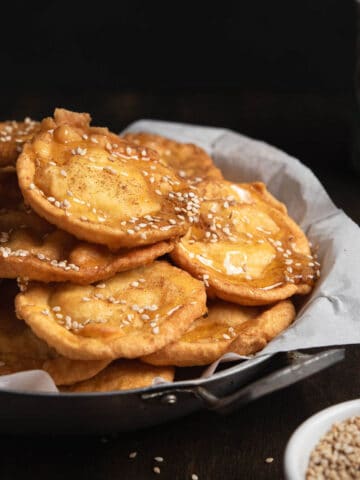
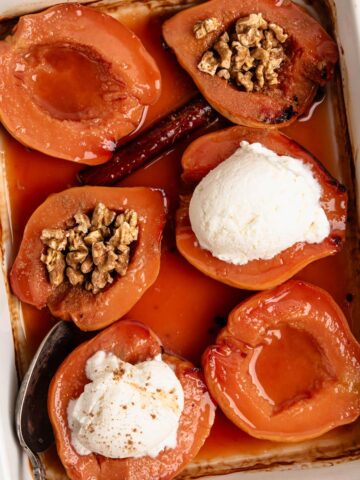
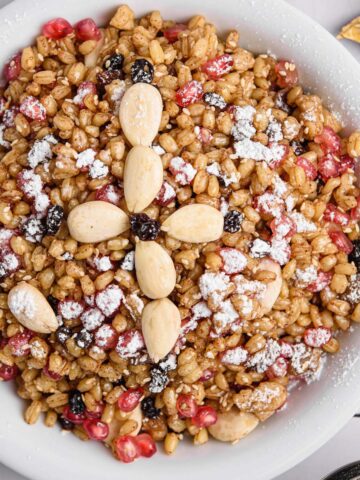
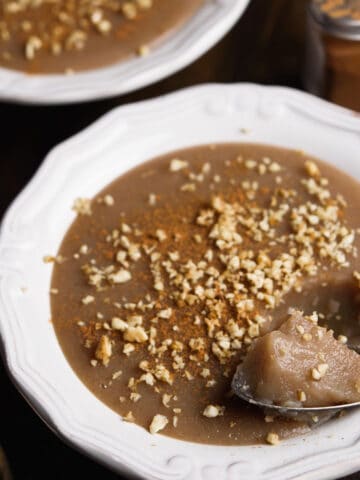
Leave a Reply